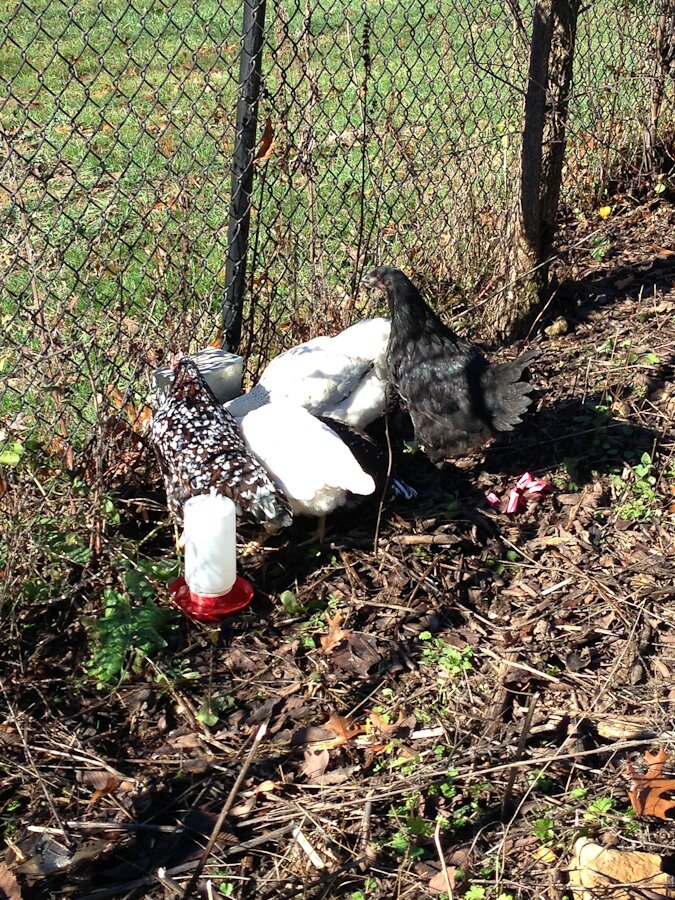As soon as we finished building our first chicken coop at our previous house in the city, we found the statutory limit of 4 chickens to feel, well, so limiting. There are so many different kinds of chickens, and four just seemed like a really small flock.
The old coop that we cleaned up when we moved in has plenty of space for many more chickens, as does the run I fenced in. So we put increasing the size of our flock on a relatively short list when we moved in.
We’d lost one hen to some sort of sickness shortly before moving, so waited a bit to give the remaining three girls some chance to adjust and make sure they weren’t sick, too. Everybody seemed fine after a month, so we set out to look for some new girls. (At some point I want to get a rooster, too, but we’re going to wait until the coop isn’t 15 feet from the kids’ bedroom windows for that.)
Erica Solis at Emancipation Acres (who was generally super friendly and helpful) had some three-month old pullets (pullets are hens that have yet to lay) of interesting breeds available, so we set out one morning to go pick up two, or maybe three. Without that 4 chicken limit or the constraints of a quarter-acre yard hanging over our heads, though, it was hard to limit ourselves to just a few, and we were soon on our way home with five new chickens in the back of the van.
Our new additions are:
- “Salt”, an all-white Jersey Giant
- “Pepper”, an black Jersey Giant
- “Josephine”, a Delaware (named for Joe Biden
 )
) - “Thing One” and “Thing Two”, Speckled Sussex (beautiful!)
We were concerned about how to introduce them to the existing flock. Some people suggest a month-long quarantine for new arrivals, others a week or so of see-but-no-touch separation between existing birds and new additions, but in the end we followed Erica’s advice to add the new girls at night after the existing flock was asleep. The idea, which I’d read about elsewhere as well, is that when the birds all wake up together the old flock is more inclined to accept the newcomers.
I’d fenced off a small area of the chicken run to house the new girls during that first day, when we didn’t want them to interact with our existing flock. That all seemed to go fine – the existing girls pecked around the run and had a normal chicken-y day while the newbies explored their new little area. When I went to put the new chickens on the roost at night, I found them roosting all over atop fences and even a few in a nearby apple tree! This makes perfect sense, of course, as they wouldn’t know not to go to bed just because they were in a new place. After some drama plucking sleeping adolescent chickens from trees in the dark, though, we had all eight birds nestled onto the roost in the coop.
They didn’t exactly wake up singing kum-bay-yah the next morning, but there were no major problems. The first few days sort of resembled a chicken version of the opening scene to West Side Story, roaming the run in their two packs, but they’re increasingly happily integrated.


